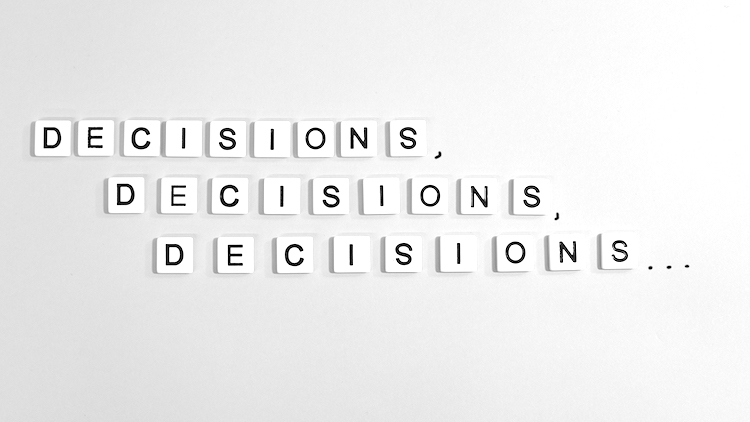
Decisions, Decisions, Decisions
A life is made up of the compounded effects of thousands of decisions. The better you get at making those decisions, the higher the likelihood that you’ll manifest the existence you desire. The problem is, as a society we’re plagued by bad decision-making. Why? Because most individuals and organizations aren’t self-aware and lack a framework for making decisions. This combination of not knowing how and not knowing why diminishes the likelihood that you will unlock your creative potential. To become an experienced creative and execute flawlessly you must learn how to identify your highest and best challenge and make better decisions.
At any given moment, there’s always a best choice, a best course of action based on your priorities and what you want to achieve. When you’re young, these highest and best challenges are quite simple to identify. Say, for example, you’re playing with your friends. You can play basketball, soccer, or video games. You like basketball better than soccer and your mom wants you to play outside, so no video games. Clearly, basketball is the highest and best challenge at that moment. As you get older, you want to join a sports team. You want to play basketball, but you’re much better at soccer. Now you have to choose what you like to do versus what you have a better chance of succeeding at. On top of that, one of your best friends is playing basketball, the other soccer. Making the best decision just got a lot more complicated. Life continues on this type of path. Based on our cognitive abilities and the minimal impact of poor decisions, things remain somewhat simple through our early twenties. For the most part, you can make a mistake and recover while still having a high probability of achieving your goals. But once you add spouses, children, aging parents, career demands, and financial planning, the impact of poor decision-making is amplified tenfold. The difference between amazing achievement and complete chaos becomes a couple of poor decisions. Your entire life can change quickly.
And the exact same theory applies to businesses. When you start, the decisions are easy, but the more money and people get involved, the more complicated it gets. That’s why going public is such a tough decision; you can reap untold financial gains, but you also end up needing to involve thousands if not millions of shareholders in your decision-making process.
Disciplined decision-making is critical. Below you will find a framework to help you define your highest and best challenge at any given moment, guiding you to make choices that meet your short-term needs while bringing you closer to manifesting your purpose and maximizing your long-term return on investment. To discover your highest and best challenge you must look at three factors: purpose/core values, short-term needs, and long-term return on investment. Here’s a quick look at each:
Primary Decision Point
- Purpose: The first and most important question to ask when making a decision is: Does this opportunity align with my purpose? When you’re focused on unlocking your creative potential, your purpose is always your primary decision point; the more closely aligned you are with your purpose, the more likely you’ll create work that’s unbelievable instead of just ordinary. Are you further integrating what you do every day (your position) and what you desire internally (your purpose)? The more integration of those elements, the better the decision.
Secondary Decision Point
- Short-Term Needs: Safety. Security. Shelter. Food. Water. Love. Tuition. Or, for some people, daily vanilla lattes, a weekly night out with their wife, an annual family vacation. While you’re working toward unlocking your potential, it’s vital that you put yourself in a position to meet your basic short-term needs. Each of us has a different idea of what we need to function effectively, and being brutally honest with yourself about those needs is critical. While anything worth pursuing requires some level of sacrifice, and most of us need less than we think, the secondary factor in determining your highest and best opportunity is to look honestly at whether you’ll be able to meet these basic short-term needs when you make this decision.
Tertiary Decision Point
- Long-Term Returns: Every time you make a short-term decision, you sacrifice something in the long term, and every time you make a long-term decision, you sacrifice something in the short term. I know that seems obvious, but you’d be surprised at how understanding short term versus long term with this type of perspective provides you a deep level of clarity. When it comes to unlocking your creative potential, you always want to maximize the long-term benefits of your decisions.
For a simple example, let’s think about eating cake while on a diet. If you continue to enjoy cake while trying to lose weight, this might satisfy you in the short term but will negatively impact your long-term health and goals. Say no to cake and your short-term satisfaction will suffer, but your long-term health and satisfaction will rise. Conclusion: your long-term returns are greater from not eating that slice of cake. Now, I have nothing against cake; I happen to love it and have made the short-term cake decision countless times. But life is about putting yourself in the position to make more decisions that benefit you in the long term than the short.

